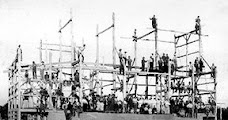| Monday July 12, 2010 While using dialogic techniques can greatly boost the power of learning, imperfect execution is always a possibility when you try dialogue for adult learning. However, when dialogue has not worked in my classes—that is, when I have not been able to generate participation, engagement, or bring educational value to the content— I have noticed three things that were always missing. What three things can make or break your attempt to become a "dialogic teacher"? back to top  Three conditions for ensuring that dialogue works in the class · The silence of the trainer. The condition for dialogue to flourish in the class is rather simple for the trainer: He or she needs to be silent more, or, as Stephen Brookfield and Stephen Preskill wrote: "…[curb] the compulsion to say all they would like to say in the interests of promoting engagement and participation." (Discussion as a Way of Teaching, 1999) · A safe learning environment. A learning dialogue is impossible if the environment has not been clearly made safe. When you set the right class atmosphere, dialogue starts effortlessly. Avoid lifeless conference rooms if possible, and use or replicate informal room settings with natural light and round tables. · A set of clear ground rules. To ensure that a learning dialogue is conducted properly and achieves full participation, it is important to state and request explicit buy-in to the ground rules you will follow. For example, here are the ones I circulate: shift focus from ideas, to the connection between ideas; shift focus from conflicting views, to how differences bring new insight to the whole; shift focus from the person to the idea, respecting the latter and always reserving skepticism. back to top  Five tips to improve the quality of dialogue (in meetings or classes!) · An invitation to remember. Start by inviting people to remember a time in their lives when they had a really good conversation. The ability to have good conversations is something people already possess, they simply need to use it in a different context. Remembering what they already know is much easier to learning it from scratch. · Duration and purpose. At the outset, clarify the time available and the purpose of the conversation to encourage more effective and productive exchanges. · A talking stick. Only the person holding it can speak. This prevents people from talking at the same time. · A stone for your thoughts. Distribute five stones per person at the beginning of the dialogue. Whoever talks must relinquish one stone. This works well as a subtle invitation to those dominating the conversation to listen more! · A quick reflection. Always make a point to ask: "What could we have done better to improve our dialogue?". Exploring how this inherent human capacity can be used to its full potential is a worthwhile and relevant closing for your dialogue. back to top  | ![]()





